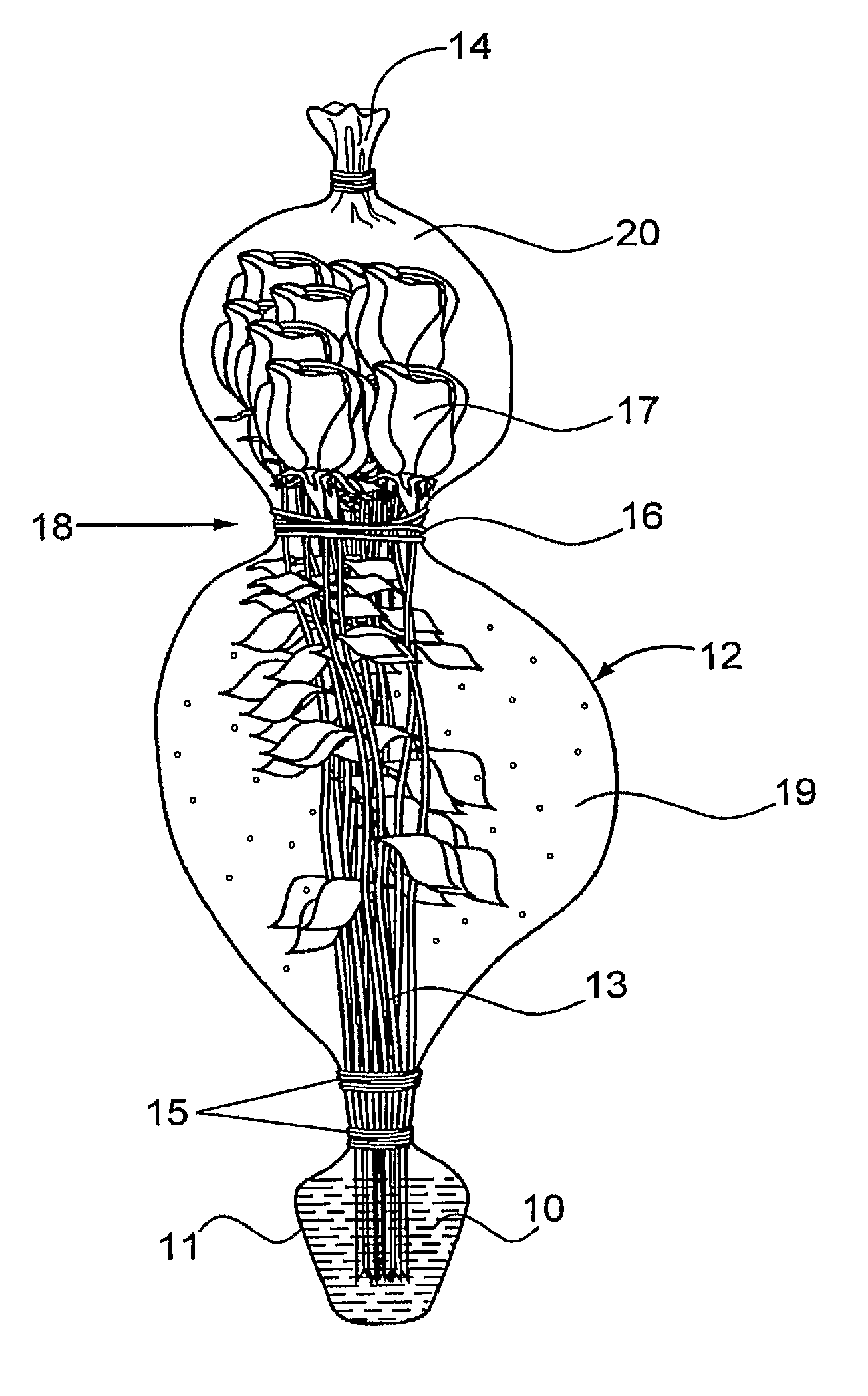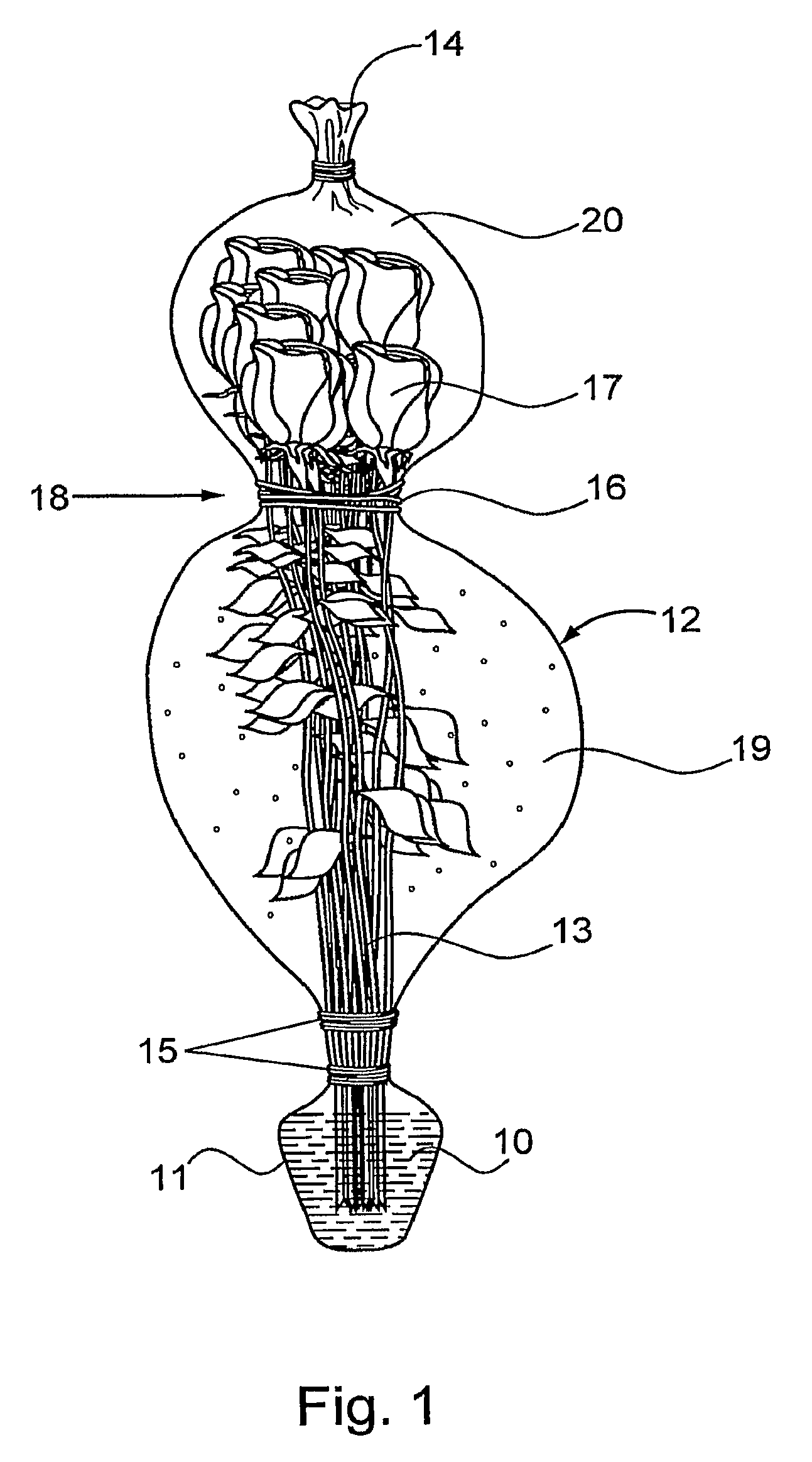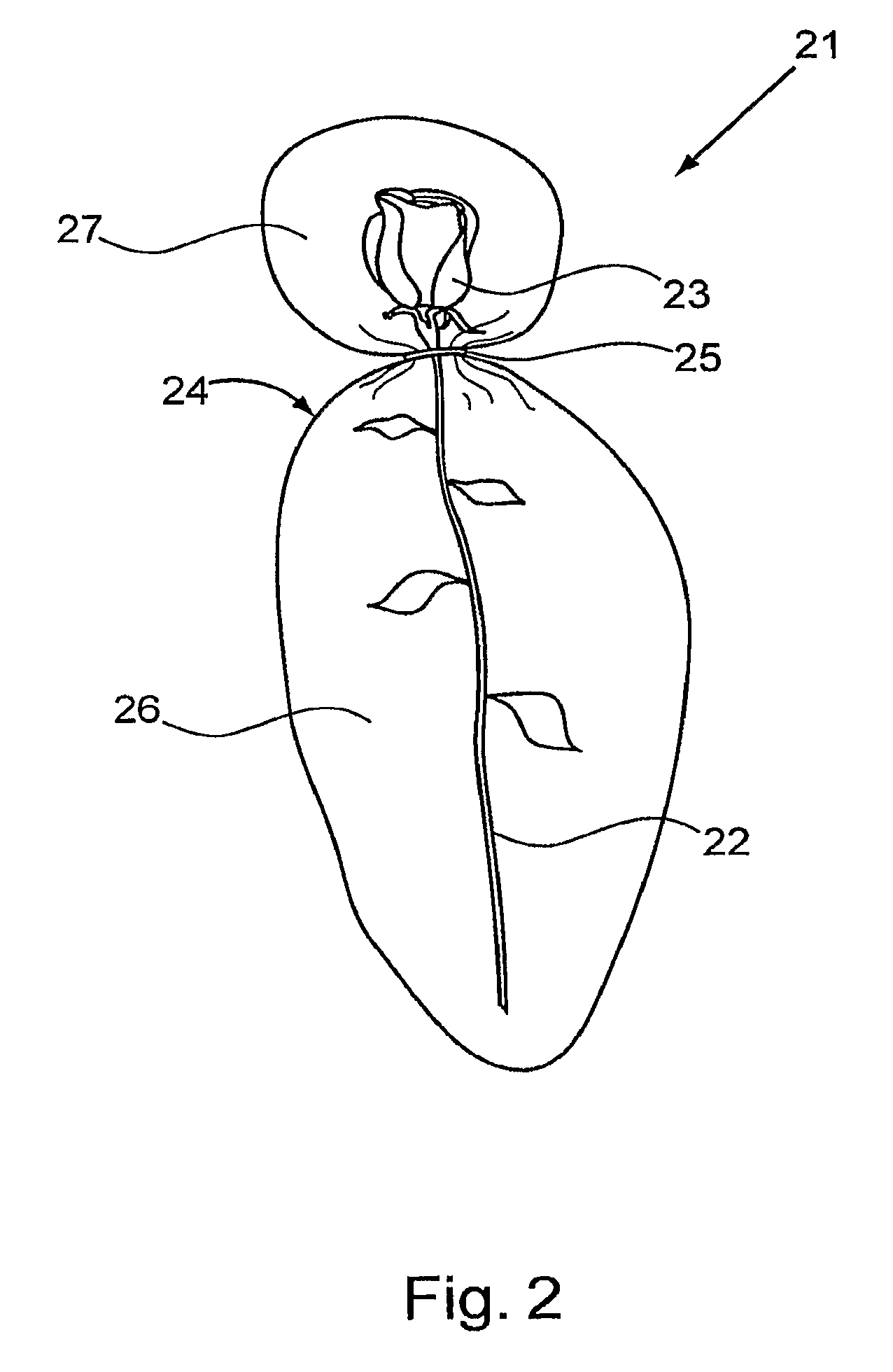Plant preservation systems
a plant and plant body technology, applied in the field of plant preservation systems, can solve the problems of preventing the presence of liquids in flower shipments, affecting the quality of cut flowers, so as to achieve adequate transportation and minimize transpiration
- Summary
- Abstract
- Description
- Claims
- Application Information
AI Technical Summary
Benefits of technology
Problems solved by technology
Method used
Image
Examples
examples
[0136]The following examples are offered to illustrate, but not to limit the claimed invention. One of skill will recognize a variety of parameters that can be altered while obtaining substantially similar results.
Preservation of Cut Roses in a Package with Partial Leaf Enclosure
[0137]A bunch (e.g., 25 roses) of freshly cut roses in early bud are selected and the cut ends placed in hard plastic preservative container of preservative media. The preservative container includes a pierceable membrane cover, through which the flower cut ends are inserted into the preservative. The preservative contains an agar (phytagar) at 6 g / L, an auxin (e.g., indole-3-acetic acid at 5-10 mg / L), a cytokinin (e.g., BAP at 5-10 mg / L), copper sulfate at 100-300 mg / L, citric acid at 1-3 g / L, baking soda at 1-3 g / L and MS salts & vitamins (or KM salts or vitamins).
[0138]The preservative container and flowers are placed into a conical plastic bag sealable container so that the preservative container is secu...
PUM
 Login to View More
Login to View More Abstract
Description
Claims
Application Information
 Login to View More
Login to View More - R&D
- Intellectual Property
- Life Sciences
- Materials
- Tech Scout
- Unparalleled Data Quality
- Higher Quality Content
- 60% Fewer Hallucinations
Browse by: Latest US Patents, China's latest patents, Technical Efficacy Thesaurus, Application Domain, Technology Topic, Popular Technical Reports.
© 2025 PatSnap. All rights reserved.Legal|Privacy policy|Modern Slavery Act Transparency Statement|Sitemap|About US| Contact US: help@patsnap.com



